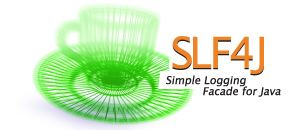Developer(s) Ceki Gülcü Operating system | Type Logging Tool | |
 | ||
Stable release 1.7.24 / February 23, 2017 (2017-02-23) | ||
Simple Logging Facade for Java (SLF4J) provides a Java logging API by means of a simple facade pattern. The underlying logging backend is determined at runtime by adding the desired binding to the classpath and may be the standard Sun Java logging package java.util.logging, log4j, logback or tinylog.
Contents
The separation of the client API from the logging backend reduces the coupling between an application and any particular logging framework. This can make it easier to integrate with existing or third-party code or to deliver code into other projects that have already made a choice of logging backend.
SLF4J was created by Ceki Gülcü as a more reliable alternative to Jakarta Commons Logging framework. Research in 2013 on 10,000 GitHub projects found that the most popular Java library is slf4j, with 30.7% of projects using it.
Similarities and differences with log4j 1.x
LoggerFactory, which is very similar in log4j. For example,{} in the log message are replaced in turn with the values. This is simple to use yet provides a performance benefit when the values have expensive toString() methods. When logging is disabled at the DEBUG level, the logging framework does not need to evaluate the string representation of the values. In the following example, the values count or userAccountList only need to be evaluated when DEBUG is enabled; otherwise the overhead of the debug call is trivial.isDebugEnabled() etc. to allow more complex logging calls to be wrapped so that they are disabled when the corresponding level is disabled, avoiding unnecessary processing.Similarities and differences with log4j 2.x
Apache log4j 2.x supports all slf4j features.
